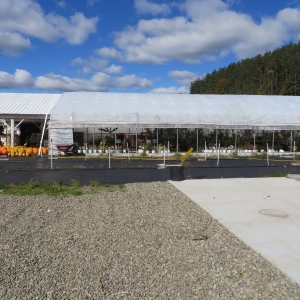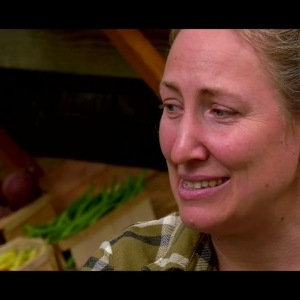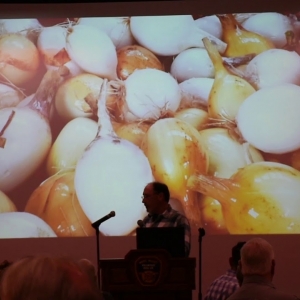Other Ag News: September in Washington, DC: FY26 Appropriations, Shutdown, and Farm Bill
When Congress returned from its August recess, it faced a long to-do list and little time to act.
On the September list is to fund the government by September 30, when current funding expires for the US Department of Agriculture (USDA) and across the federal government. A failure to fund the government by September 30 would result in a government shutdown, significantly impacting USDA’s ability to serve farmers, ranchers, and stakeholders nationwide.
Meanwhile, Congress is now nearly 7 years removed from passing a full farm bill. Earlier this year, President Trump signed the so-called One Big Beautiful Bill Act (OBBB, P.L. 119-21) into law, which slashed SNAP benefits by nearly $186 billion and directly reinvested more than $50 billion of that to further increase farm subsidies to the largest, wealthiest farmers, while programs that support the vast majority of farmers and rural communities were excluded from the bill entirely. The inclusion of a handful of traditional farm bill programs in budget reconciliation has severely diminished the likelihood that Congress will pass a comprehensive and fair farm bill this year, or at all this Congress.
With all this in mind, this blog post analyzes fiscal year (FY) 2026 agriculture appropriations proposals in both the House and Senate, the prospects of a government shutdown at the end of September, and whether a farm bill may move later this year.
FY2026 Agriculture AppropriationsOn June 23, 2025, the House Appropriations Committee approved – in a 35-27 party-line vote – its fiscal year (FY) 2026 Agriculture, Rural Development, Food and Drug Administration, and Related Agencies Appropriations Act. Meanwhile, on August 1, 2025 the full Senate passed its version of the FY2026 Agriculture Appropriations bill with strong bipartisan support, 87-9.
At a high level, the Senate bill sets FY26 Agriculture spending at just over $27 billion and maintains level funding for numerous NSAC priorities. Meanwhile, the House bill sets FY26 Agriculture spending at $25.5 billion, reducing funding for critical programs that serve farmers and their communities. The House bill also includes harmful policy riders that would prevent implementation of three rules designed to promote fair competition for livestock farmers under the Packers and Stockyards Act, as well as any similar rulemaking effort (Section 729), and prevents any funding for efforts related to Executive Order 13985, which seeks to advance racial equity and support for underserved communities through the USDA (Sec. 755).
Both the Senate and House bills include language relevant to the proposed USDA reorganization. In Sec. 746 of the House bill and Sec. 750 of the Senate bill, the following language appears:
Notwithstanding any other provision of law, no funds available to the Department of Agriculture may be used to move any staff office or any agency from the mission area in which it was located on August 1, 2018, to any other mission area or office within the Department in the absence of the enactment of specific legislation affirming such move.
Separately, during the full Senate’s consideration of its bill, Senators voted on an amendment led by Senator Chris Van Hollen (D-MD) that would have prevented the reorganization until USDA had: collected public input from stakeholders on the reorganization; conducted and made public a benefit-cost analysis; and required a report on how USDA would maintain staff expertise throughout the reorganization. While many members of Congress have spoken out with concerns about the USDA reorganization, the amendment ultimately failed 42-53 along party lines, with the exception of two Senators from Colorado joining all Republicans in opposing the amendment.
Conservation, Energy and EnvironmentOne of the most notable areas where the House and Senate FY26 appropriations bills diverge in funding is for Conservation Technical Assistance. In the Senate, the Natural Resources Conservation Service (NRCS) Conservation Operations account – 85% of which funds NRCS staff capacity and partnerships with third party conservation organizations through the Conservation Technical Assistance (CTA) program – comes in at $895.75 million. The bill reserves $775.495 million of the Conservation Operations funding for CTA. Conservation Operations saw a $26 million cut in overall funding from FY23 to FY24, and the proposed FY25 Senate funding level would bring Conservation Operations funding well above its FY23 levels, but still well below the $1.2 billion that NSAC and dozens of other conservation organizations requested.
The Senate bill reserves $10 million from the CTA funding pool for the Grazing Lands Conservation Initiative (GLCI), maintaining its current funding level. GLCI – which promotes high quality livestock grazing techniques – was funded at $10 million in FY2024 and FY2025. The Senate’s number of $10 million is an important counter to the House proposal, which has zeroed-out funding for GLCI the past several fiscal years, and NSAC is thrilled to see support for such a valuable program. We hope that continued leadership in the Senate can lead to a restoration of GLCI funding in future years to its historic levels of nearly $30 million.
The House bill, on the other hand, funds Conservation Operations at $850 million, more than $45 million below both current funding levels and the Senate proposal. It also rescinds an additional $50 million of unspent funding allocated in previous fiscal years through a rider (Sec. 765). Funding for CTA in the House bill is $705 million, a nearly $70 million cut from current funding levels, showing that the majority of funding cuts by House appropriators for Conservation Operations are directed at CTA. As noted above, the House continues to attempt to zero out funding for GLCI in FY25, despite the growing popularity of grass-based systems among new farmers and ranchers.
Research and OrganicsThe House and Senate bills do not differ significantly on sustainable and organic research, though there are noticeable differences in the report language accompanying the bills, including the Senate’s emphasis on the important role sustainable and organic research programs play in building agricultural resilience.
The Sustainable Agriculture Research and Education Program (SARE) receives $48 million in funding in the Senate’s proposal, level with FY24’s enacted level but still below SARE’s funding of $50 million in FY23. While NSAC is pleased to see no further funding cuts to SARE in the Senate proposal, we are disappointed that the Senate bill did not restore SARE’s funding to FY23 levels. The failure to restore SARE’s funding has a compounding impact as applicants continue to be turned away from the program for lack of sufficient funding.
SARE provides farmers and researchers with vital opportunities to better understand agricultural systems and increase profitability.The current demand for sustainable agriculture solutions far outweighs available resources. According to SARE’s most recent 2023-2024 Biennial Report From the Field, less than 40% of Farmer Rancher Grant proposals were able to receive funding between 2022-2023. The Committee also included report language on SARE regarding its important work on soil health:
“The Committee appreciates the work SARE has done to improve soil health through cutting edge research, education, and extension on cover crops, diversified rotations, and managed grazing. The Committee expects the funding provided to be focused on increasing agricultural resilience, including, where appropriate, interdisciplinary systems research and education, farmer and rancher research and demonstration grants, and graduate student research grants.”
Elsewhere within the purview of USDA’s Research, Education, and Economics (REE) Mission Area, a number of priorities important to NSAC members received level funding in the Senate bill. The Organic Agriculture Research and Extension Initiative (OREI) did not receive any discretionary funding on top of its mandatory authorization level of $50 million, continuing a trend in recent years. The Organic Transitions Program (ORG) received level funding of $7.5 million. The Committee included report language highlighting the importance of organic research and the need for more organic research across USDA REE.
“Organic Research.—USDA’s National Organic Standards Board [NOSB] has identified key organic research priorities, many of which would help to address challenges that have limited the growth in organic production in this country. The Committee encourages NIFA to give strong consideration to the NOSB organic research priorities when crafting the fiscal year 2026 Request for Applications for AFRI and the Organic Transition Program. Given the growing demand for organic products, the Committee also encourages USDA to increase the number of organic research projects funded under AFRI and the Specialty Crop Research Initiative.”
The Senate bill does not provide any additional discretionary funding for the Farming Opportunities Training and Outreach Grant Program (FOTO), which includes both the Beginning Farmer and Rancher Development Program and Outreach and Assistance for Socially Disadvantaged Farmers and Ranchers (Sec. 2501). While FOTO receives $50 million in mandatory funding that is unaffected by annual appropriations, the program has also received additional discretionary appropriations each year between FY20 – FY23, which NSAC members have strongly supported.
As opposed to the Senate’s approach to mostly level-fund key sustainable and organic research and education programs, NSAC is disappointed to see SARE receive $40 million in funding through the House proposal, an $8 million cut to FY24’s enacted level. Over the past several years the House has continuously worked to cut funding for SARE, despite the program’s wide popularity among farmers and ranchers. In House Agriculture Appropriations Subcommittee Chairman Andy Harris’ (R-MD-1) home state of Maryland alone, over 7,000 farmers have participated in SARE since 2020.
Similar to past years, the House bill attempts to remove funding for USDA’s Climate Hubs. The House bill also treats OREI and ORG the same as the Senate, and includes some report language recognizing the value of organic research:
“Organic Agriculture Research.—The Committee encourages NIFA to consider the USDA National Organic Standards Board organic research priorities when crafting future AFRI Requests for Applications. Given the growing demand for organic products, the Committee also encourages NIFA to continue organic research projects funded under AFRI.
Similar to the Senate, the House bill does not provide any additional funding for FOTO.
Local and Regional Food SystemsThe Senate and the House continue to prioritize funding for local and regional food systems at different levels.
The Local Agriculture Market Program (LAMP), created in the 2018 Farm Bill, is USDA’s primary funding source for local and regional food system initiatives across the country. LAMP is a combination of the Value-Added Producer Grant Program (VAPG), the Farmers Market and Local Food Promotion Program (FMLFPP), and the Regional Food System Partnership Program. Combined, they invest in processing, distribution, and marketing of local foods.
The Senate and the House have consistently funded FMLFPP; both provide the maximum authorization of $7.4 million to be split between the two programs, which is level funding from FY25. While the Senate maintains strong support for producer grants, authorizing $11.5 million for VAPG, the House proposes a significantly lower level of $5 million. The House’s sizable proposed cut in funding for the program is a new trend; they proposed the same in FY25. A decrease in funding for VAPG would have a greater impact this year compared to previous due to the increase in popularity of the program. Earlier this year, VAPG implemented a new grant application process that seeks to remove barriers for producer applicants. It is demonstrating initial success; Rural Development staff shared that the number of applicants nearly doubled.
The Office of Urban Agriculture and Innovative Production (OUAIP) is another impactful program addressing community food security through local producer networks in urban, suburban, and rural communities. Since OUAIP received its first appropriation in 2020, it has invested over $85 million in 199 grants and 146 cooperative agreements to increase the capacity of agricultural production and municipal composting initiatives in local communities across 43 states and Puerto Rico. Yet, the office remains unable to meet its full potential due to Congress continuously underfunding it. While authorized at $25 million annually, the Senate includes only $6 million – a decrease from $7M in FY25; and an even greater decrease from $8.5 in FY23. The House includes $4 million, as a result of Congressman Mark Alford (R-MO-4) including an amendment during markup, after initially being completely left out of the bill with zero funding. These levels are simply insufficient to meet program demand. We recommend significant increases to fund more than 14% of projects – the cumulative award average as of last year.
Government ShutdownDespite a decent amount of progress – albeit behind schedule – on FY2026 agriculture appropriations, there nevertheless remains a significant possibility of a government shutdown beginning October 1, 2025.
Negotiations on government funding beyond September 30 are developing by the minute and as of posting this blog, it appears possible – though not certain – that the federal government will shutdown for an undetermined period of time beginning October 1. So what, exactly, would a government shutdown mean for agriculture?
Capitol building in the fall. Photo credit: NSACEach agency and department throughout the federal government, including USDA, is required to develop a government shutdown contingency plan, available here.
While USDA will need to keep a number of employees working to handle critical functions, non-essential programs will be forced to a halt. In the past, essential activities have included but were not limited to: food safety inspections, wildfire suppression, nutrition assistance programs, and monitoring imports for pests and diseases. The number of employees that will be furloughed will depend on how long the shutdown lasts.
In particular, we anticipate that a shutdown would adversely impact farmers and ranchers who rely on county-level USDA offices of the Farm Service Agency and the Natural Resources Conservation Service. These local offices – many of which are already strapped due to the ongoing USDA staffing crisis – would close, and while the impact from the closures may not be felt immediately, the longer the shutdown runs, the more acutely farmers and stakeholders will feel the impact.
Farm BillAs many of our readers will know, Congress has not passed a full farm bill since December 2018. While OBBB – which was signed into law in July 2025 – included some components of a traditional full farm bill, it excluded many programs that support the vast majority of farmers and rural communities. This calculated move effectively ended a decades-long era in which federal farm bills were passed by coupling nutrition assistance and farm programs, raising legitimate questions of how, or even whether, future farm bills might pass Congress.
House Agriculture Committee Chairman Glenn “G.T.” Thompson (R-PA-15) has indicated that he would like the House to approve a farm bill this fall, yet there is no clear path to accomplish that goal in the House of Representatives let alone Congress as a whole, nor has there been concrete evidence of a timeline or commitment to enacting a bipartisan farm bill anytime soon. On the other side of the US Capitol, there has yet been no indication that the Senate has the capacity or appetite to advance a new farm bill this fall.
Even amidst this uncertainty, some truths remain constant. Congress must pass an extension of the 2018 Farm Bill by September 30, 2025 or December 31, 2025 at the very latest, in order to prevent critical programs’ lapsing authorization. More broadly, for a farm bill to become law this year, it must meet the high bar of a good farm bill. The bill should move our food and farm system forward by meaningfully supporting family farmers and their communities while addressing OBBB’s impact on families and individuals.
The post September in Washington, DC: FY26 Appropriations, Shutdown, and Farm Bill appeared first on National Sustainable Agriculture Coalition.
Signup for the Ag Newsletter
Get the freshest farm news, events and updates from in and around Cattaraugus County, NY at least once a month! Go signup!
Other ways to stay connected:
Get Involved in Farming
Resources for Starting a Farm in Cattaraugus County
Profile of Cattaraugus County soils
Agriculture Career Exploration
Questions about farming? Find out Who to Call











